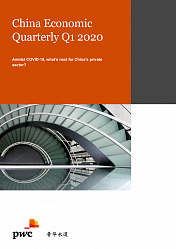Rail transport volumes from China to Europe are setting new records, even though overall trade between China and the European Union is on the decline. According to data from UTLC ERA, an alliance of the national railways of Kazakhstan, Russia, and Belarus, which handle 95% of transport between China and Eurasia, trade between China and the EU showed a downward trend in the first quarter of 2024.
Between January and May 2024, trade fell to €290.9 billion from €314 billion in the same period in 2023. EU exports to China dropped slightly by 3% to €91.1 billion, while imports from China fell by 20%, down to €199.8 billion.
The relative stability of rail freight rates and volumes, in contrast to global instability in the Red Sea and Ukraine, has contributed to record traffic on the Eurasian railway route. In the first half of 2024, a total of 362,000 TEUs (twenty-foot equivalent units) were transported from China to the EU, an increase of 11.3 thousand TEUs compared to the same period in 2023. Transit traffic accounted for 189,000 TEUs, or 52% of all cargo moved on the China-Europe-China routes.
This represents a 66% increase in transit flow between China and Europe compared to the first half of 2023. However, it’s important to note that these figures include transport to Russia and Belarus, not just the European Union, which significantly influences the overall transport statistics.
The most significant growth was recorded in transport between China and Poland, with a 222% surge to 61.2 thousand TEUs. In contrast, transport in the opposite direction—from Poland to China—dropped by 45% to just 972 TEUs. Transport from Germany also saw a decline, with Germany’s shipments to China falling by 45.6% to 21.1 thousand TEUs in recent months.
A promising outlook for growth
It is expected that in the fourth quarter of 2024, the importance of rail transport will remain high, especially in light of ongoing uncertainty related to the conflict in the Red Sea region. This is particularly relevant during the holiday season, when consumption rises, driving increased orders of goods from China.
Key transport routes in the first half of this year included Xi’an — Małaszewicze (42,000 TEUs), Chongqing — Małaszewicze (34.9 thousand TEUs), and Chengdu — Małaszewicze (19,000 TEUs). With planned expansions at the Małaszewicze hub, its capacity is expected to increase from handling 16 trains per day to 35.
Moreover, much longer trains will be able to enter Poland from China after the expansion. Currently, trains are limited to a maximum length of 750 meters, but following the modernization, trains of over 1,000 meters in length may be allowed.
To recall, in 2023, a total of 674,000 TEUs were transported on rail routes between China and Europe, which marked a 1.1% decrease compared to the previous year. The volume of transit traffic on the China-EU-China route dropped significantly, by 49%, from 410,000 TEUs to 211,000 TEUs.





